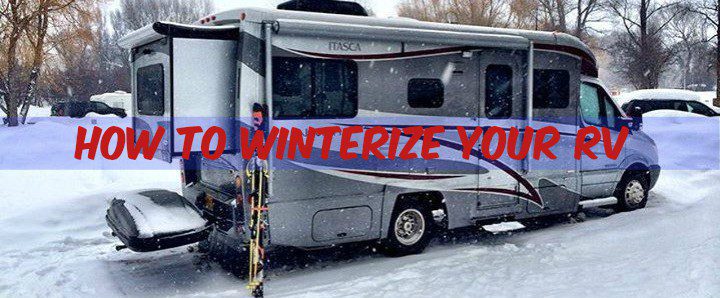After the summer fun is done and the last camping day of fall has passed, it’s time to start thinking about winterizing your RV. Winterizing your RV may seem like a daunting task. But at Louie’s Ace Home Center, we have everything you need to get the job done. If you are staying in your RV, you are going to want to keep your water lines functional. Be sure to wrap your lines with foil and open your faucets slightly if you are planning to stay in the RV. If you are storing it, follow these simple steps to winterize your RV.

- Mind the water lines: You will need to drain and dry your water lines before storage. How do you do this? First, open the “petcock” and allow everything to drain except the water heater. What’s the petcock? The petcock is a small valve used for draining. It’s usually located by the water tank.
- Drain the holding tanks and open the faucets: Flush both tanks simultaneously. Some RVs come with a built-in tank system. If yours doesn’t, clean your tanks with a wand. Take the refuse to a dump station. Toilet, shower, sinks, open them all to winterize your RV. Flush the toilet until you are sure all the water has emptied out.
- Blow out the lines and seal them up: Purchase a compressed air adapter or blowout plug. Attach it to the water intake fitting and use a standard air compressor (like the ones you use to inflate the tires on your car) to blow out your water lines. This gets rid of excess water and prevents the dilution of your anti-freeze. Do this at a maximum of 50 psi. Replace your caps, close the faucets, and close the petcock. As a reminder, the petcock is the valve you opened to drain your water in the first place.
- Detach the compressor and add anti-freeze to your lines: Make sure to detach the air compressor. This is an important step! You can add pink RV antifreeze from the inside with a hand pump from outside. You can also choose whether or not you want to use a bypass (note: bypasses require more anti-freeze). Do not drain the water heater before you have added your anti-freeze. You will use 2 to 3 gallons of anti-freeze. If you can’t bypass your water heater, you will need 6 to 10 gallons. After the anti-freeze is in, turn on your fresh water pump and let it run. This video demonstrates this process thoroughly.
- Turn on your faucets: Turn on the faucets and test the systems until they run pink. That’s how you know the anti-freeze has filled up your lines.
- Don’t forget about other appliances or to re-connect your lines: Toilets, washing machines, icemakers, and showers need anti-freeze too. Make sure they have anti-freeze to winterize an RV. You will drain your water heater last. Take it out of the anti-freeze jug and reconnect it to the fresh water tank.
To fully winterize your RV, be sure to remove any perishables, laundry, trash, and valuable items. Fix anything that is broken as it will make it easier to use the RV when its time. Cover all your vents and holes so pests don’t see your winterized RV as a place to get warm. Cover your RV with an RV cover, and don’t forget your tires, too. Some people lift their RVs to take the pressure off the tires as well.
We hope these tips help winterize your RV. Visit Louie’s Ace Home Center for all of your RV supplies. Have a great winter!
